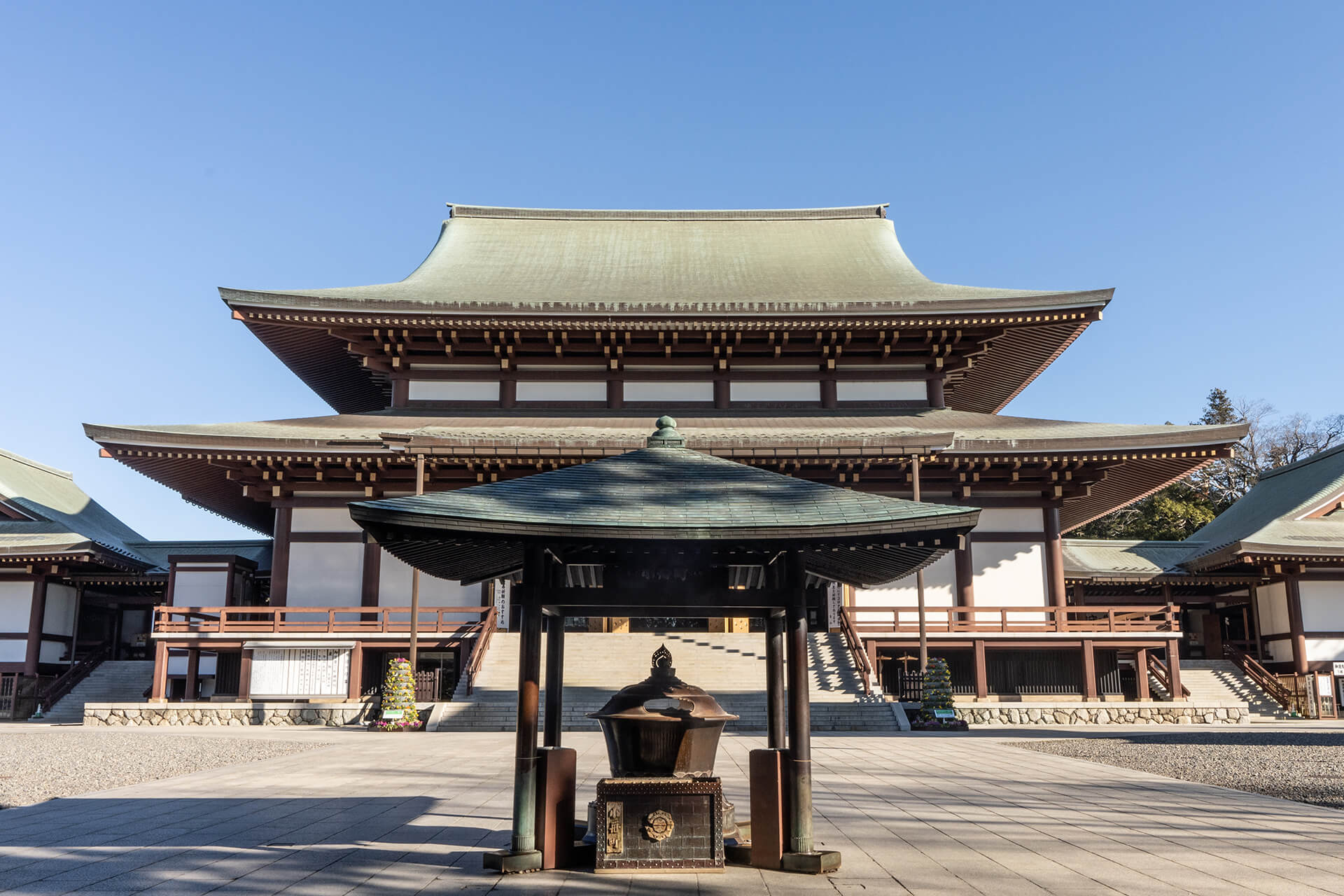
Things to Do | Visit Chiba | Latest update:2025/02/25
You can find Naritasan Shinsho-ji Temple just 8.5 kilometers from Narita Airport, an accessible destination for even those on a brief stopover—a mere thirteen-minutes away by taxi, or twenty-four minutes away via train and a short walk. With over 1,000 years of history, this temple offers visitors a chance to immerse themselves in a traditional and idyllic Japanese setting. Naritasan, as it is commonly known, also gives you an opportunity to witness sacred Buddhist rituals. The monks here pray for the fruition of dreams in ceremonies that take place multiple times a day; usually five times a day on weekdays, and eight times a day on weekends and holidays.



Founded in 940, Naritasan is dedicated to Fudō Myoo (Achala), a deity called a “fire Buddha.” Fittingly, this temple is famous for its goma rituals, with which Fudō is associated. The ceremony for the fruition of dreams involves a large ritual fire, where the head monk burns votive tablets, as offerings for the wishes of the faithful. Before the ceremony, visitors can write their desires down on the tablets at the temple’s reception area. The flames are said to represent the contents of the mind of the deity; thus, in this ritual, they absorb the offered prayers. Prayers sit on the tatami (woven-grass) flooring in the dimly lit hall, capped by a towering ceiling from which hang intricate golden chandelier-like decorations meant to portray the heavens. Off to the far-left-hand side of the hall, a monk fiercely strikes a gigantic taiko drum, whose every beat hits like the voice of creation.

The temple grounds are known for their classic and timeless Japanesque beauty; several of the structures have been deemed Important Cultural Properties by the Japanese government. Behind the grounds lies Naritasan Park, a quintessential Japanese garden. Depending on the timing of your visit, you may also be able to enjoy one of the festivals held there. Some of the most well-known events are: Oshougatsu, the New Year’s festivities held in the first week of January; the taiko festival which takes place in April; and the Gion Festival in the beginning of July.


Naritasan Shinsho-ji is one of the oldest Buddhist temples in Japan, founded during Japan’s Heian period. Since this temple was born after a time of war, to appease the spirits, its monks pray for an end to all wars. As peacetime is often great for the creative arts, Naritasan possesses a deep connection to the acting world. Although the ancestors of the legendary kabuki actor Ichikawa Danjuro originally hailed from the Odawara area, they relocated to Narita in the late-seventeenth century. There, they even established a yago (stage family name) called “Naritaya” – in honor of the temple – establishing a connection which is now three-hundred and fifty years old. The first Danjuro’s stage name was to be passed down hereditarily, but his wife had trouble conceiving a child. It is said that he prayed at the temple for his wife’s fertility, and soon after she was able to produce a male heir. The family eventually moved on to Edo (modern day Tokyo) but the seventh Danjuro was expelled from that city – due to a policy of the Edo Shogunate – and they relocated to Narita. The shogun at the time had banned all luxuries, and since the kabuki world was deeply connected to opulence, the seventh Danjuro fell in violation of that ordinance. While living in the relative safe-haven of Narita, his family deepened their ties with the temple, and even donated the Gakudo Hall to the Buddha.

For those with a little less time to spend, but still wanting an immersive experience, Naritasan Shinsho-ji Temple offers a few different options. Mr. Matsuoka of the temple’s planning department explains that Naritasan offers workshops of sutra writing with a fude brush. Before the workshop begins, a short meditation prepares the student’s spirit to focus on this task.

For those craving a bit more discipline, Mr. Matsuoka explained that there are dedicated meditation periods, but that all guidance is in Japanese. Therefore, should a visitor need an interpreter, it should be arranged by the visitor themselves. All reservations for the offered activities may be made through the reception desk. Regardless of how you choose to experience the deep history of Naritasan, it will surely be a time slip well spent.


1 Narita, Narita City
(A 10-minute walk from either Keisei Narita Station, or JR Narita Station)
+81-476-22-2111
Accessibility